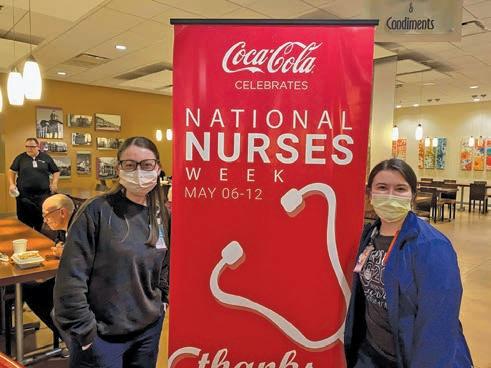
4 minute read
The Journey
from The PAPER June 2023
by Ruth Doyal
with Samantha Brazie
Friends, today you’re going to read about something that every one of us has (whether we believe we do or not) – choices. Did you know that it is estimated that the average adult makes about 35,000 somewhat conscious decisions every day? Whether you are intentionally or actively making those choices, is completely up to you.
Advertisement
Writing this at 6 a.m., I’ve probably already made at least 100 choices … most of which I don’t remember. I decided to wake up, to take a shower, what clothes to put on, to check my email from bed, what shoes to wear for walkability that work with my outfit, if I really need to go to the networking event on my calendar or have a complete office day (which I really need), to stop at Starbucks for a triple espresso to mix into my protein drink for breakfast, to be sitting at my computer writing this column right now … the list goes on and on.
Lately I’ve been thinking about and doing some inside work about big picture choices that every single one of us has. The choice to continue to work at a job, the choice to continue to choose your
Hydration Advocation
continued from Piedmont Page
• About 92 ounces of fluid a day for women
• About 124 ounces of fluid a day for men spouse and the choice to be happy. That’s right, the CHOICE to be happy. Every second of every minute of every hour of every day of every year, you decide (consciously or unconsciously) your degree of happiness.
*Contact your doctor regarding the recommended amount of daily fluid intake specific to your health status.
Again, this also factors in fluid-intake from other foods and beverages—food is responsible for around 20% of fluid consumption, the rest coming from beverages. And, while you’re going to be craving more cold drinks during the warmer months, you’re also likely going to be eating more fruits as they start coming into season, which will also bump up the amount of water you’re consuming.
It’s also important to remember that there are a lot of factors that cause individual variation. As illustrated above, the recommended daily amount varies based on sex, age, weight, and any underlying health conditions, which will also cause that number to change. Ultimately, the best way to determine whether or not you need to drink more water in that moment is to pay attention to your body. A dry mouth, dizziness, and fatigue are all typical signs of dehydration, but you can also pay attention to urine color: pale yellow being ideal, dark yellow-to-orange signifying dehydration, and clear urine signifying overhydration.
That’s right—you can actually drink too much water. The dangers of overhydration are much less emphasized than dehydration, but water intoxication is very possible, and it’s important that we remember, in the midst of trying to keep ourselves healthy and hydrated, that we don’t overcompensate and plunge ourselves into the other extreme. On average, a healthy adult’s kidneys can process one liter of water per hour (33.81 ounces), so it’s important that you don’t drink more than 2 bottles of water an hour, also taking into account what else has been consumed during that timeframe. This is a common issue for athletes, marathon runners, and anyone engaging in intensive exercise, for which an alternative to excessive fluid consumption is pairing electrolytes with your water intake. Electrolytes speed up the rate at which your body is able to process and thereby start feeling the effects of hydration, decreasing the likelihood of overdoing it on your beverages.
It may require some extra steps on your part to keep up with summer and take care of your body at the same time—on either side of the hydration spectrum—but maintaining a healthy relationship with water will provide the kind of longstanding benefits you don’t want to miss out on.
For additional tips and tricks on staying hydrated, check out Piedmont’s newsroom, or have a conversation with a physician near you (visit piedmont.org to search for locations in your area).
Let’s not also underestimate the power of the butterfly effect. For those unfamiliar, the butterfly effect is the theory that even tiny actions such as the flapping of a butterfly’s wings can result in big events such as massive storms. The way I think about it is that my negative attitude or half-thought-out response could have a negative impact on someone else, whether I intended that or not. So, even when I’m having a bad day, I try my very best to make other people feel like I care. Because at the end of the day, I do. But one bad day or negative interaction from me can really affect the way someone else’s day or moment goes … and I’m not ok with that. That’s a choice I make every day, intentionally.
So, I want to encourage you. Be aware, be thoughtful, be in control of the only thing you are capable of being in control of – you. Prioritize your decisions instead of being reactionary to other people, develop your own core values and learn from bad decisions. Don’t repeat things that don’t serve you well. Decide. Be intentional. Love yourself enough through your Journey – the good, bad and the ugly. What the rest of that looks like is up to you.
“At every moment, we always have a choice, even if it looks like we don’t. Sometimes that choice may simply be to think a more positive thought.”
– Tina Turner
June 23 at PTC’s Drake Field 5 to 9 p.m. Drake Field, 155 Willowbend Rd, Peachtree City, GA 30269
A free public market with music, entertainment, food and artists.










